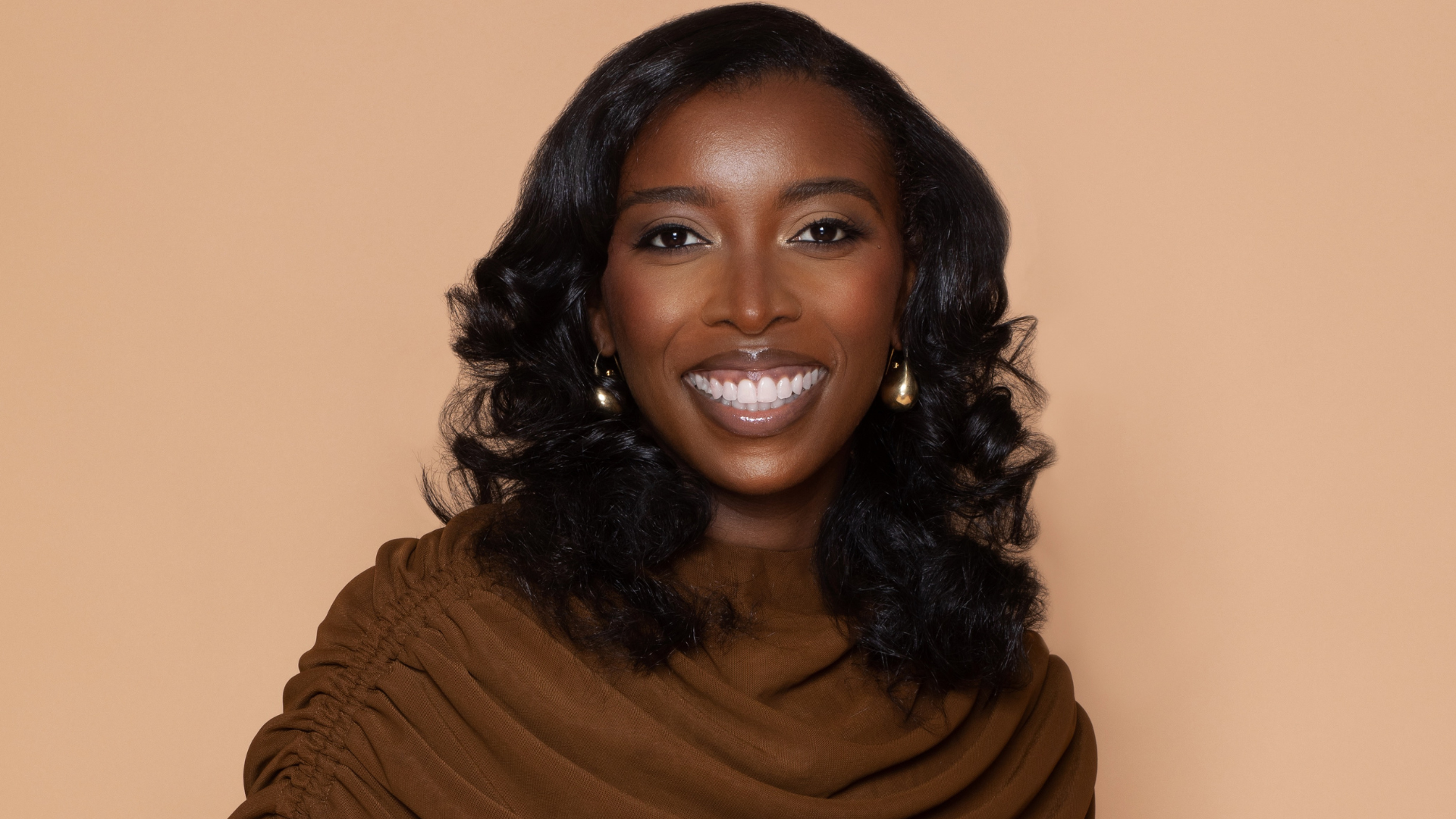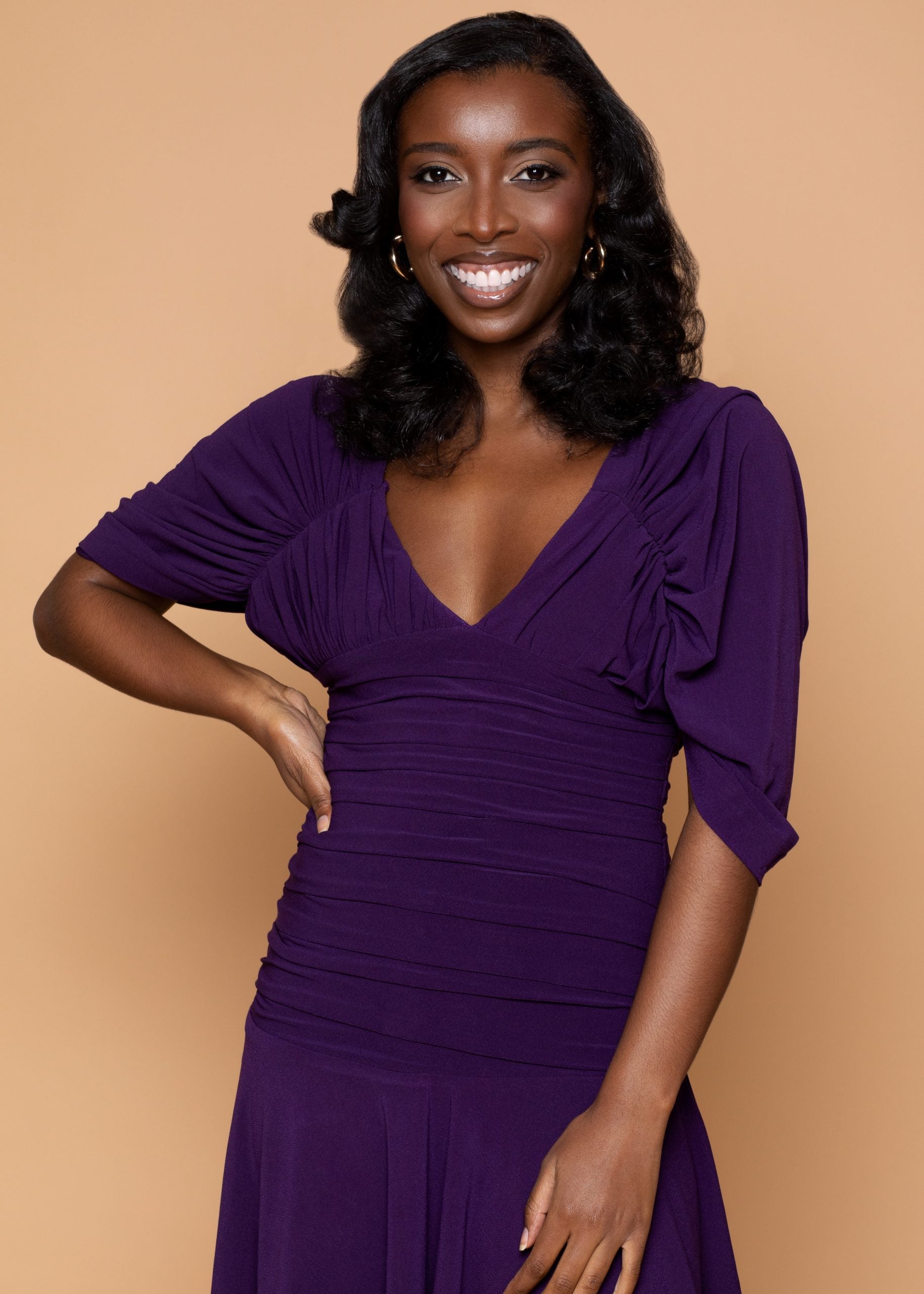
Arbiters Of Style: Trailblazers In Fashion is a new series that pinpoints innovative and established leaders in the fashion world, spotlighting their contributions to sustainability, technology, cultural influence, and more.
It’s a brisk winter afternoon in New York City when I arrive at The Folklore’s latest New York Fashion Week showroom in NoHo. Upon my arrival, I immediately begin walking through the space. It’s an immersive space I aim to attend each season due to how it showcases global brands. It’s a pivotal stop too since The Folklore’s founder and chief executive officer Amira Rasool and her team create a much-needed physical space for well-known and lesser-known companies. There are quite a few brands that captured my attention this time around: Oríré, Rendoll, Nicole Benefield, and Afrique KOD. Each brand has a particular identity–for instance, Oríré by the Nigerian designer Orire Aleshinloye is unabashedly feminine in its approach. Aleshinloye regularly releases pieces designed with ruffles, dramatic sleeves, and also vibrant hues. In short, Oríré offers a thrilling take on womenswear. Whereas Nicole Benefield is an eponymous brand based in New York filled with utilitarian-inspired separates. The garments are typically clean-cut and come in oversized silhouettes. What makes the distinction between these two brands is also what allows space for The Folklore to thrive, it is filling a gap in the global fashion market.
The NYFW showroom is just an example of the intentional work Amira Rasool is doing to show up for fashion brands and their founders. This recurring touchpoint presents designers with the opportunity to get their pieces in front of editors like myself. Brand discovery is something that when curated well can lead to breakthrough moments for emerging brands seeking new customer bases and press moments, especially if they’re not based in the United States. This season The Folklore added beauty, home, and lifestyle brands to the mix–countries that were represented included the U.S., U.K., Nigeria, South Africa, Tunisia, Mexico, and more.
Alongside the showroom activations, the brand has an online marketplace where consumers can purchase clothing and accessories. Additionally, The Folklore offers business services and educational resources that Rasool says are utilized by their robust community of designers. Think line sheets, opportunities to make global shipments easier, digital panels, and more.
In-person at this season’s NoHo showroom, Rasool tells me there is also a large and thriving WhatsApp groups where she regularly sees designers communicating with one another. “Our WhatsApp community is amazing. People are sending messages every day,” she adds. This method of engagement has proven to be effective for The Folklore. It also delves into how brands are stronger when they lean on one another for support.
Amira has roots in the media industry with previous roles at companies such as V magazine, WWD, and Marie Claire. With this background in addition to her expansive writing capabilities for NYC-based publications, she’s well-equipped to pour into businesses that are seeking global growth. For those who are seeking concise ways to scale, The Folklore is leading them into an era where they can compete in a market that is difficult to navigate alone. “People are more likely to see me at a tech event than they are to see me at a fashion event,” Rasool explains. She expresses that relationship-building has paid off for her in this regard. “In terms of what we [have built] a lot of it is based off of investors, being able to raise the money, but also being able to know and connect with people who build products.” The founder adds that there’s an incredible community of Black founders she feels sustained by who have helped her navigate the commerce enablement market too. Rasool mentions that Techstars provided her with major brand-building skills.
Last April, The Folklore closed a seed funding round with $3.4 million to help businesses scale through new services at the time which included capital and talent. According to TechCrunch, this brought the total funding to $6.2 million. An offering that was announced included The Folklore Capital which would reportedly allow brands to receive loans of up to $1 million as working capital. “Access to capital is probably one of the biggest things that prevents small businesses from scaling. For diverse brands in particular, there are a lot of economic hurdles that these groups face, which makes it even harder for them to access capital,” Rasool told TechCrunch. She also stated that this service is “particularly helpful for people who are taking on big wholesale orders from our retailers.” According to TechCrunch in 2022, the startup introduced The Folklore Connect which was described as “a B2B marketplace and wholesale management software for brands to sell partner global retailers like Nordstrom, after it shifted from sourcing and selling directly to consumers.”
Another offering includes a labor marketplace for brands unable to hire full-time teams but needs occasional talent. The community of brands reportedly recommends talent or manufacturers who are listed on the marketplace following multiple stages of vetting.
Through Rasool’s work with The Folklore, she’s been able to platform brands and give them the tools they need to break into the global fashion market. She’s done so while providing mentorship opportunities for them as well alongside educational webinars–these are tentpole initiatives that are built into The Folklore. Offering these facets has proven to be a success, and Rasool’s journey which began in 2017 with her company has led to the swift growth of brands and offered them support in countless capacities.
Below ESSENCE.com catches up with Amira Rasool who discusses what it’s like working at the intersection of fashion and tech, meeting brands customers where they’re at, tips for emerging entrepreneurs, and more.

Can you talk to me about what gaps The Folklore has closed for businesses since its launch?
First and foremost, when it comes to accessibility a lot of brands, they’re worried about sales. They’re thinking, “Oh. Is it my product? Oh. It’s because I’m not spending money on social media.” No. It’s because when they go to your e-commerce site, and you’re based in Nigeria, it costs $50 for them to get it shipped to the U.S. That is why you’re not getting orders, not because of the products. There are all different types of scenarios and reasons why you could not be getting orders, but that is a huge barrier.
[Also] making sure that [businesses are] structured so that [they’re] easily accessible to customers is your number one job before you even think about designing. If this is my target customer, and this is the way they like to shop, how can I make it so that they can shop that way with me? So when we’re talking to brands who are like, “I’m struggling to get international orders, X, Y, and Z,” because we focus a lot on international commerce, we’re saying, “All right. Well, let’s look at what you’re doing. Do you have an e-commerce site that ships internationally?” “Yes.” “All right. Well, what’s your shipping prices?” “Would cost us $50 to ship one dress.” “No. We can’t have that. How do we cut that rate?” You go to The Folklore.
[Our] shipping feature is something that a lot of our brands utilize for their consumer orders, their wholesale orders, everything. So now, you’ve established, “All right. I can now get it to customers for $20.” Now, let’s also look at the case of you want a small boutique in Atlanta to buy from you. What are you doing there? You just sending them your website? They can’t buy through you that way, or have you created a line sheet? No. A lot of times, they don’t have line sheets.
So now, you have The Folklore, where you can create a line sheet in under 60 seconds, an industry standard line sheet. You can now send that to them, but not only can you send that to them, you can send them the link and say, “Hey. Here’s a link to my wholesale storefront. All you have to do is add the items to cart and check out.” So making it very accessible and seamless is going to be how you can stand out. Outside of just having great products, you need to be able to have a great business infrastructure, a good commerce infrastructure. That’s what we’re providing them now, is that infrastructure for them to be able to operate internationally, but even locally.
The Folklore does an incredible job at meeting designers and customers where they’re at online. Can you talk to me a bit about that?
So unlike this physical showroom, where you can come in, touch, and feel, there has to be something that’s going to make up for the absence of that experience. And so being able to tell the story visually and then as well as through written word can be that thing that puts you in a place where, hey, I could imagine myself actually in a store touching this the way that it’s being described or the way that they created a video for it that shows the way it’s flowing.
I think, especially online, that’s really what we focus on, is, how do we tell the story to make somebody feel like they have the clothes on themselves right now, or they can picture themselves in it right now? That’s what we encourage our brands to do.
What are the common misconceptions that come with representing and working with African designers?
There are things that, of course, are synonymous with African fashion, prints, and things that are synonymous with it. But, when you look at it, at the end of the day, Africa is a continent that has a bunch of talent.
The fashion that you’ll find in West Africa is different than the fashion that you’ll find in East Africa. And so it’s being able to look at it holistically and being able to say, “Just because I had an experience with this brand, or I’m used to this brand in this country doing this design, then I’m going to write off Africa as this is what it is.” I think that the biggest misconception is that all of Africa is monolithic.
How do you build the level of comfortability that you’ve built with the designers?
We have customer discovery calls every quarter, where we invite brands to speak with us and the team, and we’ll just ask them questions. We’ll select maybe 20 brands or something like that, and we’ll just ask them questions, “What is it that you need the most help with on your business? What are the things you like about our platform that are great? What are the things that aren’t so great? How can we improve?”
What tips do you have for budding entrepreneurs looking to merge fashion with tech?
I would say really, you [have] to figure out what the problem is and then solve it in a way that other people aren’t solving it, or at least that you’re coming from a unique point of view if you have a similar solution, and then figuring out how to set yourself apart from it. I would say the easiest way to set yourself apart is by building a community. There are other software and tools out there that people can use to run their businesses. A lot of brands stay on our platform [and] are using our platform because of the community.
Not only are we talking about the community with each other that we’ve enabled through our WhatsApp groups and through our events, but they very much consider our team as a part of their community, as well because they see how much we care. They see that this is a business that was created to serve them, to be able to provide economic opportunities for marginalized groups, whether that be geographically marginalized, racially marginalized.
